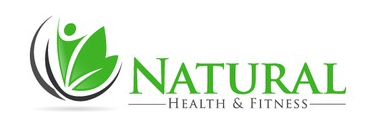Needle-free thread embedding is an innovative approach to wound closure and tissue reinforcement that has gained significant attention in recent years. This groundbreaking technique eliminates the need for conventional sutures and instead uses specially designed tools to embed threads within the skin or soft tissues. This article explores the mechanism behind 無針埋線, its numerous benefits, applications in various fields, safety considerations, and more.
Introduction
In the realm of medical advancements, needle-free thread embedding has emerged as a transformative alternative to traditional suture techniques. By utilizing specialized tools and materials, this method offers a range of advantages over conventional sutures. Not only does it eliminate the discomfort associated with needles and the pain of stitching, but it also provides faster recovery times and reduces the risk of infection.
The Mechanism behind Needle-Free Thread Embedding
Needle-free thread embedding involves the use of specialized tools specifically designed for this purpose. These tools allow practitioners to insert threads into the skin or soft tissues, providing support and reinforcement without the need for traditional sutures. The threads used in this technique are typically made of bioresorbable materials, ensuring compatibility with the body and reducing the risk of adverse reactions.
Furthermore, 無針埋線效果 minimizes the risk of infection. Traditional sutures create entry points for bacteria, increasing the chances of infection. In contrast, the smooth threads used in this technique reduce the likelihood of microbial contamination, promoting a healthier healing process.
Moreover, patients who undergo needle-free thread embedding experience faster recovery times and reduced scarring. The absence of visible sutures eliminates the need for suture removal, simplifying the healing process. Additionally, the embedded threads provide structural support and promote tissue regeneration, resulting in improved wound healing and cosmetically appealing outcomes.
Applications of Needle-Free Thread Embedding
The versatility of needle-free thread embedding has led to its adoption in various fields. In cosmetic procedures, this technique is used for facelifts, brow lifts, and neck rejuvenation. By embedding threads, practitioners can lift and tighten sagging skin, resulting in a more youthful appearance. Needle-free thread embedding is also employed in medical treatments, such as tendon and ligament repair, providing support and stabilization without the need for invasive surgery.
In rehabilitation and physical therapy, this technique is utilized to address musculoskeletal conditions and injuries. The embedded threads act as reinforcement, assisting in the recovery process and promoting proper tissue healing. Overall, the applications of needle-free thread embedding continue to expand as its benefits become more widely recognized.
Safety and Effectiveness of Needle-Free Thread Embedding
Extensive clinical studies and research have demonstrated the safety and effectiveness of needle-free thread embedding. The majority of patients who undergo this procedure report high levels of satisfaction with the outcomes. Furthermore, success rates indicate that the embedded threads provide long-lasting support and produce desirable results.
Choosing a Qualified Practitioner
When considering needle-free thread embedding, it is crucial to choose a qualified practitioner who has received adequate training and possesses relevant experience. The expertise of the practitioner significantly contributes to the success and safety of the procedure. Additionally, certifications and credentials can serve as indicators of a practitioner’s proficiency in performing needle-free thread embedding.
Preparing for Needle-Free Thread Embedding
Before undergoing needle-free thread embedding, patients are required to attend a consultation and assessment session. During this appointment, the practitioner evaluates the patient’s suitability for the procedure, discusses their expectations, and addresses any concerns. Pre-procedure guidelines, such as avoiding blood-thinning medications or supplements, may also be provided to ensure optimal results.
The Procedure of Needle-Free Thread Embedding
The needle-free thread embedding procedure typically involves several steps. Firstly, the practitioner marks the desired insertion points and prepares the area. Next, specialized tools are used to create tunnels within the skin or soft tissues. The threads are then inserted into these tunnels, strategically placed to achieve the desired effects. The number and pattern of threads vary depending on the specific treatment goals. The entire procedure is typically performed under local anesthesia and can be completed within a reasonable timeframe.
Aftercare and Post-Procedure Guidelines
To facilitate optimal healing and results, specific aftercare instructions are provided to patients who undergo needle-free thread embedding. These guidelines may include avoiding strenuous activities, maintaining proper hygiene, and keeping the treated area clean and moisturized. While complications are rare, patients should be aware of potential side effects, such as mild swelling or bruising, and follow the recommendations provided by their practitioner.
Comparing Needle-Free Thread Embedding to Traditional Suture Techniques
When considering wound closure and tissue reinforcement options, it is essential to weigh the pros and cons of needle-free thread embedding against traditional suture techniques. While traditional sutures have long been a standard practice, needle-free thread embedding offers unique advantages. However, it is important to consider factors such as cost and the specific requirements of each case when deciding between the two methods.

